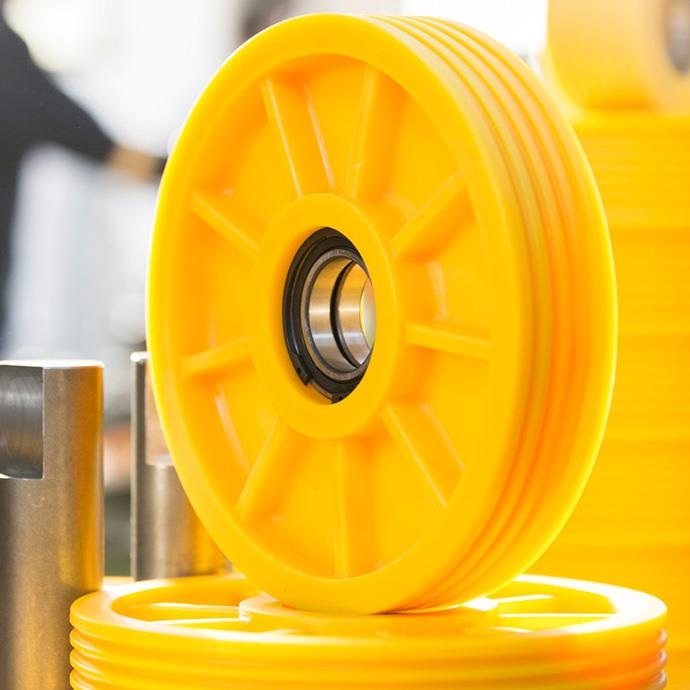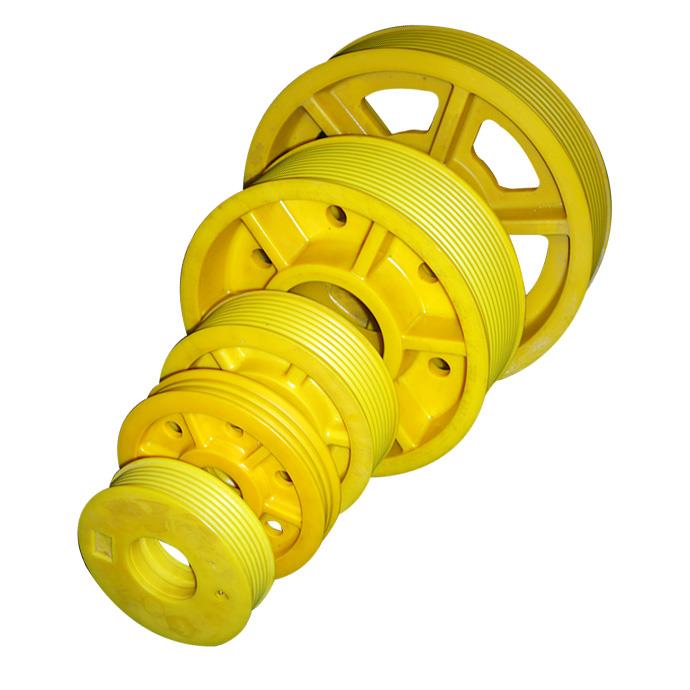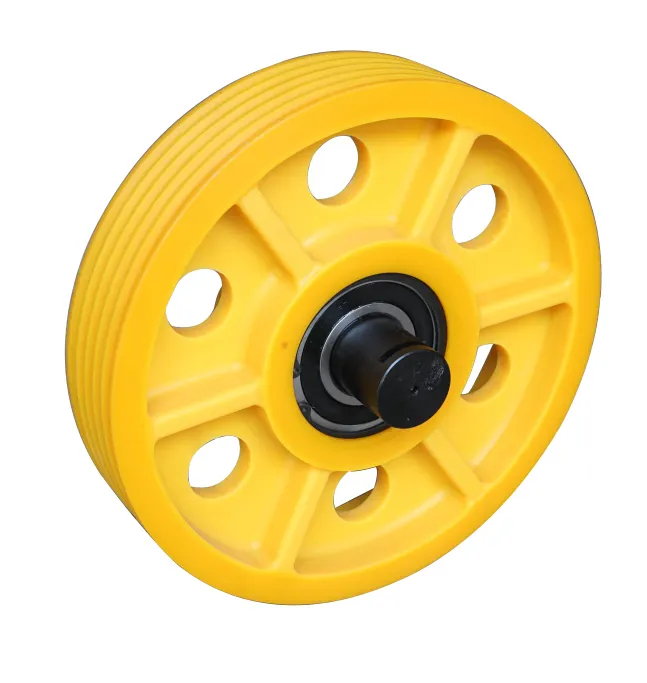Product Description
Application
Tower crane, construction lift, crane, ship crane,
Truck crane, mining and other construction machinery
Advantage Products
Company Profile
About Us
Focus on a variety of industries
Provide maintenance solutions
Optimize customer inventory and reduce cost
Established in 2012, HangZhou Granville is a branch of the Granville Group. With our experience, competitive prices and excellent service, we have won the praise of our customers. Our business involves standard and special industrial parts, automotive parts and construction machinery parts required for a variety of different industrial applications.
Our main products include
Bearing series :
ball bearings, deep groove ball bearings, self-aligning ball bearings, angularcontact ball bearings, cylindrical roller bearing, tapered roller bearings, thrust ball bearings, thrust rollerbearings, needle bearings, spherical bearings, joint bearings, pillow blocks, linear bearings, etc.
Accessories series:
Automotive Spare Parts,Seals & O-rings ,Power transmission parts Chain and Sprocket
Our products are mainly exported to Europe, America, Middle East, Southeast Asia, India, Pakistan, Bangladesh, Singapore, Korea and other countries around the world. We have a large number of products in stock, which can be delivered with high efficiency in the shortest possible time to solve your matching problems in time. In addition, we have reliable quality and quantity of products to offer. We adhere to the principle of CHINAMFG situation and insist on “providing comprehensive quality products and best reputation” to provide excellent services to our customers.
What We Do
Comprehensive product range:
– Bearings
– Oil seals, Transmission belt
– Chain and Sprocket
– Hub assembly & Wheel bearings
– Coupling, castings
– Linear motion
Our Advantages
1. We have the most advanced bearing process equipment, CNC automatic facilities, and testing instruments.
2. We manufacture ball bearings and mounted bearing units, and also provide a strong full range of products, including electric motors and components One-stop partnerships products from our audited supply chain.
3. All products are manufactured exclusively by companies with ISO 9001:2008 certified Quality Systems which use state-of-the-art machines. The quality path starts from the beginning to deliver and goods’ quality trackable
Our Values
Behavior-based, service-oriented, focused on results, and committed to continuous improvement
Factory
To be a leader in providing the best valuable (Reasonable cost, Reliable quality) supply of precision rollers.
Providing this value will help our customers remain competitive in the global marketplace.
Advantage Manufacturing Processes and Quality Control:
01Heat Treatment
02 Centerless Grinding Machine 11200 (most advanced)
03 Automatic Production Lines for Raceway
04 Automatic Production Lines for Raceway
05 Ultrasonic Cleaning of Rings
06 Automatic Assembly
07 Ultrasonic Cleaning of Bearings
08 Automatic Greasing, Seals Pressing
09Measurement of Bearing Vibration (Acceleration)
10 Measurement of Bearing Vibration (Speed)
11 Laser Marking
12 Automatic Packing
After Sales Service
- Optimize customer inventory and reduce cost
- Provide maintenance solutions
FAQ
Q1.Can you accept OEM and customization?
A: Yes. We can customize it according to the samples and drawings you provide.
Q2.Do you keep a stock of these things?
A: In stocks
Q3.Can you provide samples free of charge?
A: Yes. We can provide samples free of charge. But the freight is paid by the customer.
Q4.What’s the delivery date?
A:The delivery time of sample orders is 3 working days.The bulk orders are 5-10 working days.
Q5: Why your price is higher than others?
A: Price = quality . We firmly believe that by the quality of the customer is always get more reliable than on price . So we insist on doing high-quality products.
Q6:What kind of transport do you have ?
A: According to the weight,we will choose the most appropriate mode of transport for you. Our freight forwarding is efficient and cheap.
/* January 22, 2571 19:08:37 */!function(){function s(e,r){var a,o={};try{e&&e.split(“,”).forEach(function(e,t){e&&(a=e.match(/(.*?):(.*)$/))&&1
| Rows Number: | Single |
|---|---|
| Material: | Stainless Steel |
| Lubrication: | Sinopec/Great Wall/Shell/Mobil/SRL/Kluber |
| Samples: |
US$ 0/Piece
1 Piece(Min.Order) | Order Sample Sample unit price depends on the specific model
|
|---|
| Customization: |
Available
| Customized Request |
|---|
.shipping-cost-tm .tm-status-off{background: none;padding:0;color: #1470cc}
|
Shipping Cost:
Estimated freight per unit. |
about shipping cost and estimated delivery time. |
|---|
| Payment Method: |
|
|---|---|
|
Initial Payment Full Payment |
| Currency: | US$ |
|---|
| Return&refunds: | You can apply for a refund up to 30 days after receipt of the products. |
|---|
How do lifting pulleys contribute to the longevity and reliability of lifting equipment?
Lifting pulleys play a significant role in enhancing the longevity and reliability of lifting equipment. They contribute to the smooth functioning of the lifting system and help minimize wear and tear on various components. Here’s a detailed explanation of how lifting pulleys contribute to the longevity and reliability of lifting equipment:
1. Load Distribution: Lifting pulleys distribute the weight of the load evenly across the lifting system. By spreading the load over multiple ropes or cables, pulleys reduce the strain on individual components, such as cables, hooks, and attachments. This balanced load distribution minimizes the risk of overloading and premature failure of specific parts, thereby prolonging the lifespan of the lifting equipment.
2. Reduced Stress on Components: Lifting pulleys help to alleviate stress on various components of the lifting system. When lifting heavy loads, the force exerted on the cables or ropes can be substantial. By utilizing pulleys, the load is distributed across multiple ropes or cables, reducing the stress on each individual component. This reduction in stress helps prevent excessive stretching, bending, or breakage of cables, ensuring the reliability and longevity of the lifting equipment.
3. Efficient Force Transmission: Lifting pulleys facilitate efficient force transmission within the lifting system. As the load is distributed and redirected through the pulleys, the force is applied in a controlled and balanced manner. This efficient force transmission minimizes unnecessary strain on the lifting equipment and reduces the risk of sudden jerks or jolts that can cause damage or premature wear.
4. Improved Load Control: Lifting pulleys enable precise control over the lifting process, allowing operators to adjust the speed, direction, and position of the load with accuracy. This precise load control helps in preventing sudden or uncontrolled movements that can put stress on the lifting equipment. By ensuring smooth and controlled load handling, pulleys contribute to the longevity and reliability of the lifting equipment.
5. Reduction in Friction: Lifting pulleys are designed to minimize friction between the pulley and the ropes or cables. They often incorporate ball bearings or other low-friction mechanisms to ensure smooth rotation. By reducing friction, pulleys minimize wear on the ropes or cables, as well as on the pulley itself. This reduction in friction helps to extend the lifespan of the lifting equipment.
6. Protection Against Abrasion: Lifting pulleys can incorporate features such as protective coatings or linings to minimize abrasion and wear on the ropes or cables. These protective measures help prevent damage to the lifting equipment caused by repeated rubbing or contact with rough surfaces. By safeguarding against abrasion, pulleys contribute to the longevity and reliability of the lifting equipment.
7. Maintenance and Serviceability: Lifting pulleys are typically designed for easy maintenance and serviceability. They can be quickly inspected, lubricated, and replaced if necessary. Regular maintenance, including cleaning and lubrication of the pulleys, ensures their optimal performance and extends their lifespan. By facilitating routine maintenance, pulleys contribute to the overall reliability and longevity of the lifting equipment.
8. Compatibility and Interchangeability: Lifting pulleys are often designed to be compatible and interchangeable with various lifting systems and configurations. This compatibility allows for easy replacement or upgrading of pulleys as needed. Interchangeability ensures that pulleys can be seamlessly integrated into the existing lifting equipment, thereby extending its reliability and lifespan.
In conclusion, lifting pulleys play a crucial role in promoting the longevity and reliability of lifting equipment. Through load distribution, stress reduction, efficient force transmission, improved load control, friction reduction, protection against abrasion, maintenance and serviceability, as well as compatibility and interchangeability, pulleys contribute to the smooth functioning and extended lifespan of the lifting equipment.
What are some real-world examples of lifting pulley applications in construction projects?
Lifting pulleys are widely used in construction projects for various lifting applications. They enhance the efficiency and safety of lifting heavy loads, equipment, and materials. Here are some real-world examples of lifting pulley applications in construction:
1. Tower Crane Lifting: Tower cranes are commonly employed in construction projects to lift and move heavy materials and equipment vertically and horizontally. These cranes utilize lifting pulleys in their lifting mechanisms. The pulleys distribute the load’s weight, provide mechanical advantage, and enable precise control over the lifting process.
2. Mobile Crane Operations: Mobile cranes, such as truck-mounted or rough-terrain cranes, are versatile lifting equipment used in construction sites. Lifting pulleys are integral components of these cranes, specifically in their boom systems. The pulleys help lift heavy loads and position them accurately, facilitating efficient construction operations.
3. Elevator Installation: In construction projects involving multi-story buildings, elevators are essential for vertical transportation. Lifting pulleys are crucial components in elevator systems. They enable smooth and controlled movement of the elevator car, ensuring safe transportation of passengers or goods between floors.
4. Concrete Pumping: Concrete pumps are used to transport and pour concrete in construction projects. These pumps employ lifting pulleys to lift and position heavy concrete-filled hoses or booms. The pulleys facilitate precise pouring and placement of concrete, allowing for efficient construction processes.
5. Roofing Material Installation: Lifting pulleys are commonly used in construction projects for the installation of roofing materials. They assist in lifting heavy roofing materials, such as shingles or metal panels, to elevated locations. The pulleys help distribute the load’s weight and make it easier for workers to handle and position the roofing materials accurately.
6. Facade Installation: Lifting pulleys play a crucial role in the installation of building facades. They are used to lift and position large panels, glass sheets, or curtain wall components to the desired heights. The pulleys enable controlled movement and precise placement of the facade elements during installation.
7. Bridge Construction: Lifting pulleys are extensively utilized in bridge construction projects. They assist in lifting and positioning heavy bridge components, such as segments, beams, or precast elements. The pulleys distribute the load’s weight and enable precise control over the lifting process, ensuring safe and efficient bridge construction.
These are just a few examples of how lifting pulleys are applied in construction projects. Lifting pulleys offer versatility and adaptability, allowing them to be customized and integrated into various construction lifting systems. By incorporating lifting pulleys, construction projects can benefit from improved lifting capabilities, enhanced efficiency, and safer operations.
What role do lifting pulleys play in supporting and guiding lifting cables or ropes?
Lifting pulleys play a crucial role in supporting and guiding lifting cables or ropes during lifting operations. They serve several important functions that contribute to the safe and efficient movement of loads. Here are the key roles that lifting pulleys play:
1. Load Support: Lifting pulleys provide a stable and secure platform for supporting the weight of the load. The load is typically attached to the lifting cable or rope, which passes through the pulley. The pulley’s design, construction, and load-bearing capacity ensure that it can safely support the weight of the load without deformation or failure.
2. Force Distribution: Lifting pulleys distribute the force applied to the lifting cable or rope evenly across the pulley wheel. As the cable or rope passes over the pulley, the load’s weight is distributed over a larger area, reducing stress and preventing excessive wear on the cable or rope. This force distribution helps to maintain the integrity and longevity of the lifting medium.
3. Friction Reduction: Lifting pulleys are designed to reduce friction between the lifting cable or rope and the pulley wheel. They often feature smooth surfaces, rounded grooves, or ball bearings that minimize the contact area and frictional forces. By reducing friction, the pulleys enable smoother movement of the lifting medium, reducing wear on the cable or rope and facilitating more efficient lifting.
4. Directional Guidance: Lifting pulleys guide the lifting cable or rope along a specific path, ensuring that it stays aligned and properly positioned during the lifting process. The pulleys prevent the cable or rope from twisting, tangling, or deviating from the intended path, which could compromise the safety and effectiveness of the lifting operation.
5. Tension Control: Lifting pulleys assist in controlling the tension in the lifting cable or rope. By adjusting the position and angle of the pulley, operators can regulate the tension applied to the lifting medium. This control over tension is crucial for maintaining stability, preventing slippage, and ensuring safe and controlled lifting of the load.
6. Force Amplification: Lifting pulleys amplify the force applied to the lifting cable or rope. By using multiple sheaves or wheels, the pulleys increase the mechanical advantage, allowing operators to lift heavier loads with reduced effort. This force amplification is particularly beneficial when dealing with heavy loads that would require excessive force to lift without the mechanical advantage provided by the pulleys.
Overall, lifting pulleys play a vital role in supporting and guiding lifting cables or ropes. They provide load support, distribute forces evenly, reduce friction, guide the lifting medium along the desired path, assist in tension control, and amplify the applied force. These functions contribute to the safe, controlled, and efficient movement of loads during lifting operations.
editor by CX
2024-04-25




